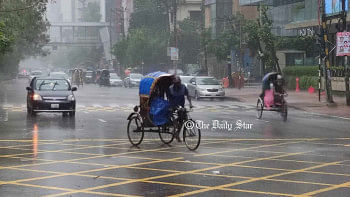What do Buddhists in Bangladesh have to do with the Rohingya crisis anyway?

The plight of the Rohingyas dates back to the late 18th century, but their persecution on a large scale began in the 1970s. Since then, they have undergone systematic ethnic cleansing, be it for their racial or religious identity. Bangladesh, as a neighbouring country, has seen a large influx in 1970 and 1992, and in 2017, it is once again witness to another huge influx due to the ongoing persecution by the Myanmar government. For the local and international media, it is now clear that genocide has been committed by the Myanmar Army but the international community is yet to state this clearly and take actions to put a stop to this atrocity in the proper forums.
Interestingly, although myriad historical, geo-political and economic factors have contributed to the current escalation of violence against Rohingyas, a fraction of media houses has persistently coloured the conflict as a religious one. Prominent media houses, such as BBC, Al Jazeera and Time, have continued to paint a reductive version of events, focusing simply on religion, without considering the impact their reports might have upon the Buddhist community living in Bangladesh. We talk about media sensibility, but it is clearly absent at both the national and international level. We must not forget the direct impact of media coverage in cases of religious conflict—a classic example of it is the demolition of Babri Mosque in India and the subsequent large scale communal attacks in Bangladesh in the early 1990s.
It is true that Buddhists form a majority in Myanmar and that they are supposed to practice self-restraint against killing any lives if they truly follow the philosophy of Buddhism. To challenge the allegation that Rohingyas are being targeted for their religion alone, some argue that there are other Muslim groups who have not faced such problems from the Burmese rulers, while others highlight the economic reasons for the Myanmar state's interest in the Arakan region. Given the contentions and contradictions, it is imperative to dig deep to find out the root causes of the persecution of the Rohingya, but unfortunately, some of us seem to be looking for an easy solution to a relatively complex problem—targeting the Buddhists in Bangladesh. They appear to overlook the obvious—that not all Buddhists in the world are responsible for the atrocities of the Myanmar army, just as not all Muslims in the world are responsible for the terror attacks caused by a few in the name of religion. To do so is to risk propagating a politics of hate that will only create more rifts among different communities in Bangladesh.
"Unless we can remain vigilant and ensure that a politics of hate does not seep into our everyday lives and politics, there are fears that the religious sentiments of people may be exploited—and communalism fuelled—by certain quarters looking to benefit at the local and national level.
If we look back to 2012, there had been similar violence on the Rohingya people orchestrated by the Myanmar army, which left at many dead and thousands displaced. At around that time, there was a communal attack in Ramu where as many as 13 Buddhist temples and about 50 houses were set on fire in Ramu and Ukhia Upazila by miscreants. Some argued then that the Rohingya people had carried out the attack in response to the continued persecution by the Myanmar army. A fraction of intellectuals insisted that Bengali Muslims had been living in harmony with the Buddhists in the country for long and that there had been no conflict prior to the arrival of the Rohingyas. This statement seriously lacks credibility as the Rohingya people had not been granted refugee status in Bangladesh, and they are not socially and economically empowered enough to plan a large-scale attack on the Buddhist community in the neighbouring area of Cox's Bazar district. Moreover, there had been several fact-finding committees from both government and non-government organisations, which clearly revealed that local people were involved in the atrocity. It had nothing to do with the Rohingya or the then crisis in Myanmar.
This time, we are seeing a different trend among some people who are accusing the Buddhist community in Bangladesh for the atrocities in Myanmar. The Buddhist community in the country is mainly located in Chittagong, Cox's Bazar and the three hill districts. A large number of Buddhists are also living in the capital and other cities for professional purposes. The followers of Buddhism comprise both Bengali and indigenous communities. There have been reports of Buddhist monks being attacked in the streets and inside temples in different areas of Chittagong district. Some Buddhist workers in the garments industry received threats from locals in Chittagong and Dhaka and eventually had to leave their workplaces for fear of physical assault. Many have been asked to defend Buddhism—"Why are Buddhists in Myanmar killing Muslims?"—as if all Buddhists are somehow responsible for the mass killings. This humiliation is evident on the street as well as in social networking sites. Even children are getting bullied in their schools by the parents of their classmates.
The Buddhist community in Cox's Bazar district are under pressure and, fearing attacks, riot police have been deployed in many Buddhist temples. There is a high probability that the Rohingya issue will be used in local politics. Apparent communal violence in the past have mostly been targeted attacks; rather than religious concerns, they involved land-grabbing and vindication of personal vendettas.
There is a common denial of the fact that there are threats to the Buddhist community in the country. Some even say that there had been no communal attacks on Buddhists until 2012, but when they say that, they eventually try to forget and undermine the violence committed on the indigenous people in the three hill districts in Chittagong Division since the 1980s. There have been mass killings, rapes, arson attacks and so on since 1978. Several cases have been filed in all these years, but none of them were successful to ensure punishment to the perpetrators. In 2001, after the national election, there had been a great number of communal attacks on the Hindu community and hundreds of cases were filed, which also proved to be futile.
We must admit that religious fundamentalism has been increasing in the past few years and we have seen a number of monks, pundits and clerics being killed alongside writers, publishers and bloggers since 2013. The communal violence in Santhia Upazila of Pabna district, the attack in Comilla district and the latest attack on the Hindu community in Brahmanbaria district indicate the rise of fundamentalism in the country. The state eventually failed to provide equal protection to the minority communities of the country, despite its pledges. However, there are positive forces which could drive away the communal elements in society, but they are mainly inactive and are playing a passive role in the communal violence by not raising their voices. Unless we can remain vigilant and ensure that a politics of hate does not seep into our everyday lives and politics, there are fears that the religious sentiments of people may be exploited—and communalism fuelled—by certain quarters looking to benefit at the local and national level.
Barrister Jyotirmoy Barua is an advocate, Supreme Court of Bangladesh.





Comments